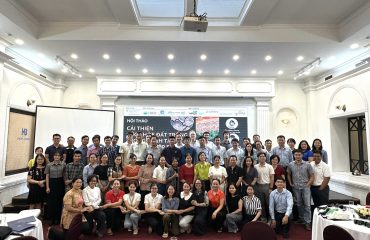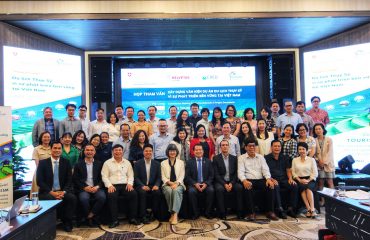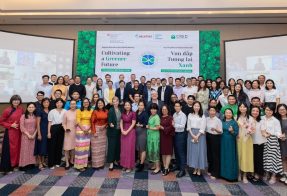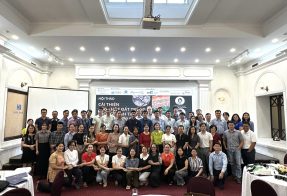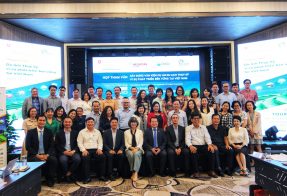Sustainable tourism is increasingly a global priority, aiming to responsibly develop the industry while minimizing negative impacts on the environment and local communities. Public-Private Partnerships (PPPs) are seen as an effective strategy to achieve this goal, combining the resources, expertise, and capabilities of the public and private sectors to promote sustainable tourism. In simple terms, a PPP is a collaboration between the government and private enterprises to finance, build, and manage infrastructure projects or public services. In tourism, PPPs may involve sustainable tourism infrastructure development, community empowerment, heritage preservation, and the adoption of green technologies to create new destinations. Southeast Asia, including Vietnam, along with Europe and Africa, has emerged as a prominent region for PPPs in tourism over the past two decades.

Benefits and Challenges of PPPs in Tourism
PPPs bring significant benefits. First, they enhance investment by mobilizing private capital, reducing pressure on public budgets. Second, the private sector contributes technology and expertise, improving destination management and operational efficiency. Third, PPPs drive local economic growth, environmental conservation, and community participation. Positive aspects include better value for money, effective risk management, innovative solutions, improved service quality, and resource optimization.
However, PPPs also face challenges. Conflicts of interest between the public sector (focused on environmental protection) and the private sector (prioritizing profit) may arise. If not properly managed, inequitable benefit distribution can disadvantage local communities. Additionally, unsustainable tourism infrastructure development may harm the environment. Thus, transparent policies, clear accountability, and community involvement are essential for PPPs to be effective.
Common PPP Tools and Collaboration Models in Tourism
- Management and Operation Contracts: The government delegates the management and operation of tourism facilities (e.g., national parks, attractions) to the private sector without transferring ownership. Machu Picchu in Peru is a prime example, where a private company operates under state supervision.
- Build-Operate-Transfer (BOT) Contracts: The private sector invests in building infrastructure (e.g., hotels, airports), operates it to recover costs, and then transfers it to the government. Thailand uses BOT for Suvarnabhumi Airport, and Vietnam applies it in coastal resorts, supporting tourism without straining public budgets.
- Privatization of Services: The government outsources tourism services (e.g., transportation, tour guides) to the private sector, a common PPP approach to enhance flexibility and reduce public costs. In Switzerland, the government provides policies and financial support, while the private sector (e.g., Switzerland-Mobility with Rent a Bike) offers bike rentals, maintains routes, and develops booking apps, enabling tourists to explore sustainably without cars.
- Concession Agreements: The private sector operates a destination or service for a long term (20-30 years), paying fees or sharing profits with the government. Brazil’s Iguazu National Park is a notable example, where Cataratas do Iguacu S.A. operates under a concession, investing in eco-friendly infrastructure and forest conservation, with part of the profits supporting indigenous communities.
- Joint Ventures: The government and private sector co-invest, sharing risks and profits in tourism projects. Many Southeast Asian countries use this model, such as Indonesia for new tourism products or Singapore’s Marina Bay Sands, a major tourism complex built through public-private collaboration.
- Green Investment Partnerships: The private sector invests in eco-friendly tourism projects (e.g., renewable energy, resource conservation) with policy support from the government, aligning with global sustainable tourism trends. Costa Rica exemplifies this with the Rincón de la Vieja Reserve, where public-private collaboration develops ecotourism, with the private sector installing geothermal systems and reforesting, attracting tourists while preserving biodiversity.
Switzerland – A Leading Example of PPP in Sustainable Tourism Development
Switzerland stands out for its PPP models focused on efficiency, quality, and sustainability, despite fewer large-scale projects due to its decentralized federal system. The success of PPPs in Switzerland hinges on three core factors: (i) active stakeholder participation, (ii) transparency and rigorous management, and (iii) the use of technology and tools to monitor and evaluate effectiveness. The government establishes a robust legal framework and supportive policies, the private sector contributes financial investment and operational expertise, and local communities ensure social and environmental sustainability, reducing corruption and ensuring equitable benefit distribution.
Notable examples include Switzerland Tourism partnering with SWISS Air and Swiss Travel System to promote tourism via the Swiss Pass and all-inclusive packages (management and operation contracts); the Zermatt ski resort, operated by Zermatt Bergbahnen AG under a concession agreement, maintaining efficient infrastructure; Montagne Alternative in Valais, a public-private joint venture promoting regenerative, eco-friendly tourism; and Swiss Youth Hostels, which use renewable energy and sustainable materials through green investments from public and private funds, aiming for carbon-neutral tourism.
Currently, Switzerland is collaborating with Vietnam’s tourism sector through the Swiss Tourism for Sustainable Development (ST4SD) project. Partnering with VNAT and local tourism departments, the project integrates sustainability into policies, strengthens effective public-private dialogue (PPD) models, and supports the development of Vietnam-specific sustainable tourism standards (VTDI) aligned with international benchmarks. Key goals include promoting sustainable tourism policies, enhancing training capacity for the tourism industry nation-wide, and managing sustainable destinations in provinces like Ha Giang, Quang Nam, and Dong Thap.
Conclusion
PPPs are a vital tool in sustainable tourism development, balancing economic growth with resource conservation. Models from Switzerland, Indonesia, and Costa Rica demonstrate that PPPs succeed with active participation, transparency, and strong capacity. However, challenges like conflicts of interest and environmental impacts must be addressed through clear policies and strict oversight. With the right strategy, PPPs not only drive tourism but also optimize resources, enhance services, and deliver balanced benefits for all stakeholders.







